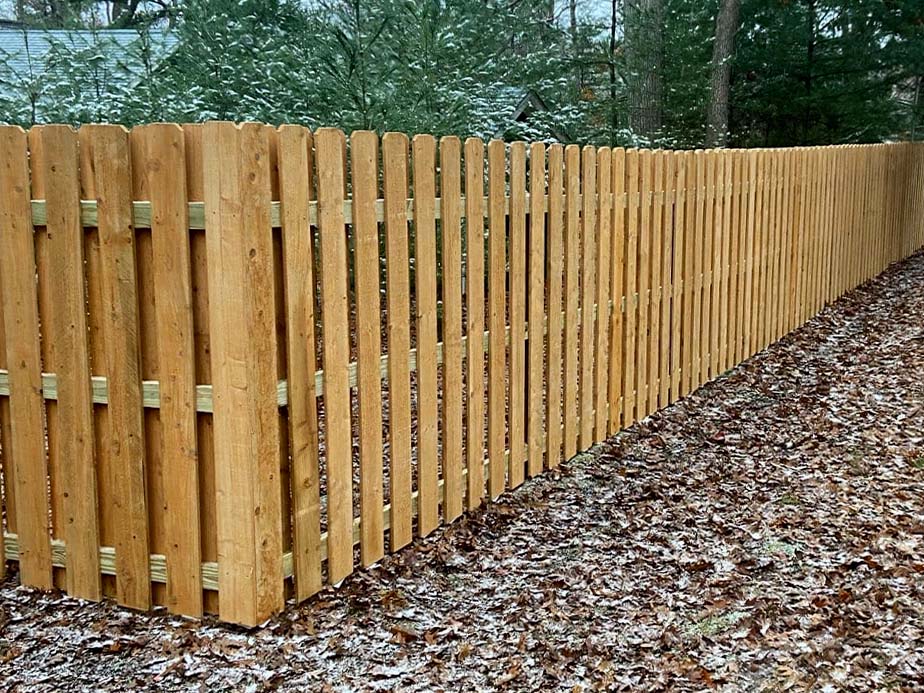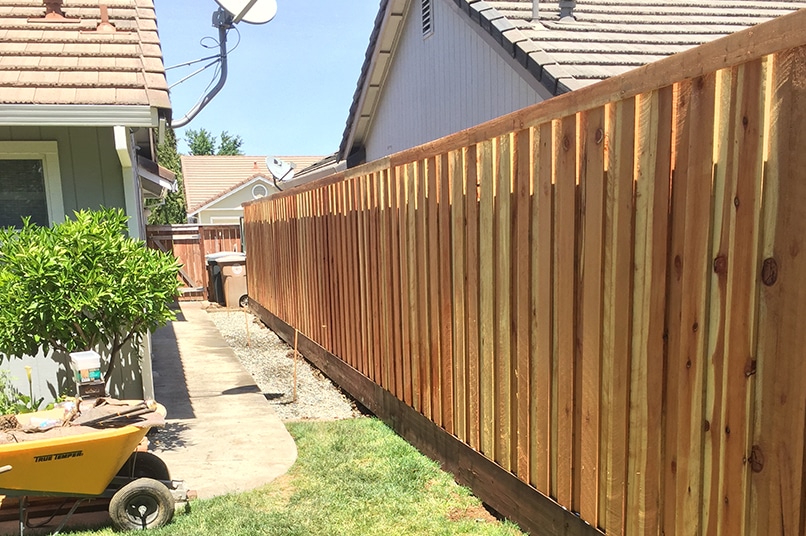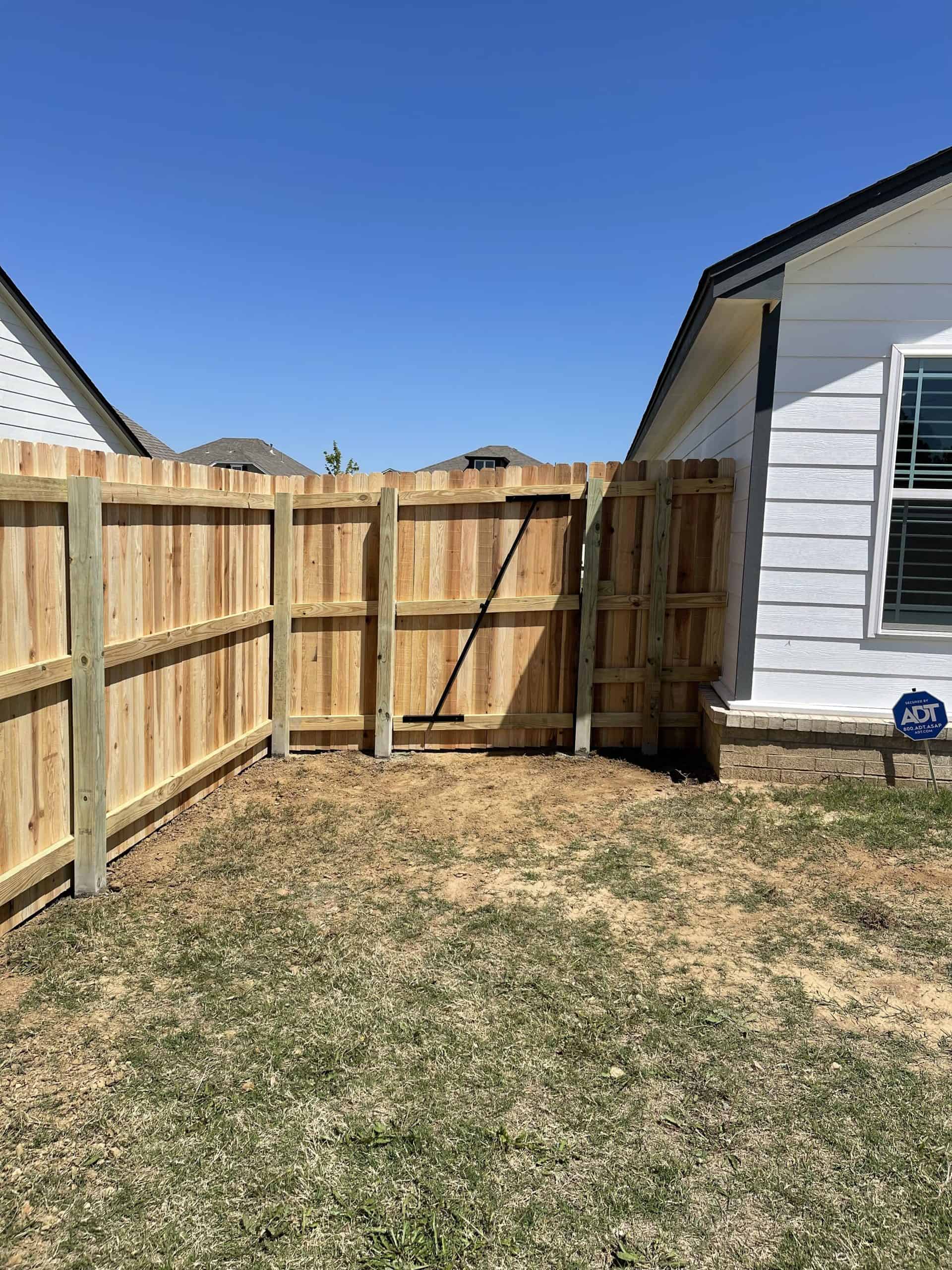How to Select the Ideal Fence Contractor for Your Backyard Project
How to Select the Ideal Fence Contractor for Your Backyard Project
Blog Article
Just How to Identify Typical Concerns That Need Immediate Fencing Fixing
It is essential to detect concerns before they become larger troubles when it comes to maintaining your fence. Regularly inspecting for indicators of rotting wood, leaning panels, or corrosion can conserve you money and time in the lengthy run. You might not realize just how climate and parasites can jeopardize your fencing's integrity. Allow's discover the typical indicators that show your fencing requires prompt interest, so you can maintain your building secure and looking its best.
Signs of Rotting Timber in Wooden Fences
Have you seen your wood fencing looking a little bit shabby? If so, it could be time to inspect for indications of deteriorating timber. Take a look at the base of the articles and panels for soft areas. That's a clear sign of rot if you push on the timber and it really feels spongy or collapses. Next off, look for discoloration or dark spots on the timber-- these typically signal wetness damage. Take note of any type of peeling off paint or coating, as this can subject the wood to more degeneration. Furthermore, a pungent, musty scent can suggest fungal growth. Do not forget to inspect links and joints; if they hang or dropping apart, the timber below is likely compromised. By capturing these signs early, you can stop more substantial damage and maintain your fence standing solid. Regular upkeep is essential to extending the life of your wood fence.
Leaning or Tilting Fence Panels
It's critical to understand what created it if you've seen your fence panels turning or leaning. This issue may indicate underlying architectural damage that requires your attention. Allow's check out the usual causes and the repair service options available to get your fencing back fit.

Reasons of Leaning Panels
It's typically an indicator of underlying issues that require resolving when you discover your fencing panels tilting or leaning. One typical reason is inadequate drain; excessive water can deteriorate the dirt around the fence messages, damaging their support. Another perpetrator could be strong winds or storms that push against the panels, particularly if they're not effectively anchored. Additionally, the natural settling of soil gradually can create articles to move, bring about a tilt. Insects, like termites, can jeopardize the honesty of wood panels, causing them to lean as well. Inadequate setup practices might result in panels not being securely established, leaving them susceptible to leaning under pressure. Address these problems without delay to maintain your fence's stability.
Indicators of Architectural Damages
Noticing turning or leaning fence panels can be startling, as these concerns typically suggest architectural damage that needs instant interest. When your fence starts to lean, it might signify that the messages are moving or that the soil around them has worn down. Pay close interest to gaps between panels or posts, as these can additionally recommend instability. deck builder. Furthermore, check for cracks or splintering in the timber, which can damage the total structure. If you discover rust or deterioration on metal components, it could endanger the stability of the fence. Keep in mind, neglecting these signs can bring about a lot more severe damages down the line, so it's necessary to examine the situation without delay and take activity before it worsens
Fixing Options Available

Rust and Rust in Metal Fences
If you have a steel fence, you could discover corrosion and corrosion sneaking in with time, especially if it's subjected to moisture. These concerns not only impact the look of your fence however can also jeopardize its architectural stability. To identify rust, seek reddish-brown spots or patches, which suggest the steel is oxidizing. Deterioration can spread out quickly if left unattended, leading and damaging the fencing to expensive repairs.To tackle corrosion and rust, you need to cleanse the affected areas with a wire brush and apply a rust-inhibiting primer. Once the primer dries, think about painting the fence with a weather-resistant paint to safeguard it additionally. Routine upkeep, such as inspecting for signs of corrosion and repairing paint as required, will certainly assist extend your fence's lifespan. Attending to these problems immediately ensures your metal fence stays strong and visually appealing for many years to find.
Fractures and Splits in Vinyl Secure Fencing

Reasons of Plastic Damages
Plastic fence is prominent for its longevity, yet it can still deal with fractures and splits because of different factors. One significant cause is severe temperature changes. It can weaken the product over time when plastic broadens in the heat and agreements in the chilly. Furthermore, direct exposure to rough sunshine can result in UV degradation, making the plastic breakable. Physical impacts, like unintentional crashes or hefty branches, can likewise create splits. Poor setup or using low-grade products can worsen these problems. Moreover, age plays a function; older vinyl secure fencing is much more susceptible to damages. Regular examinations can assist you identify these elements before they lead to considerable issues. Take aggressive actions to guarantee your fencing remains strong and undamaged.
Fixing Cracks Successfully
Fractures and divides in your vinyl secure fencing can be concerning, addressing them without delay can prevent additional damages and keep the fence's look. Initially, evaluate the dimension of the split. For tiny cracks, a vinyl fixing kit commonly includes sticky that can bond the sides, giving a smooth fix. Clean the area extensively prior to applying the sticky, guaranteeing it sticks properly. For larger divides, you could need to make use of a vinyl patch. Cut the spot to size, use glue around the edges, and press it strongly onto the split. Allow it to treat according to the producer's instructions. Routine maintenance and fast fixings can expand your fence's lifespan, keeping it looking fantastic for many years to come.
Loose or Missing Fence Blog Posts
Loose or absent fence messages can threaten the stability of your entire fencing framework. If you see any type of blog posts wobbling or leaning, it's necessary to address the issue instantly. Check for any indicators of activity, as this can cause additional damage with time. You can quickly examine the problem by giving each blog post a mild shake-- if it feels unstable, it's time to take action.For missing out on articles, you'll need to change them asap to preserve your fence's integrity. Make certain they're safely anchored in the ground with concrete or crushed rock for added security when you install brand-new articles. If a message hangs, tighten it by adding extra assistance or driving it deeper into the ground.Ignoring these concerns can result in bigger issues, like gaps in your fencing or also complete collapse. Keep an eye on your messages and remain aggressive concerning repair work!
Damages From Climate and Natural Environment
Weather and all-natural aspects can ruin your fencing, causing different types of damages that need timely attention. Hefty rainfall can cause wood to rot, making it weak and unstable. Snow buildup might bend or damage panels, while solid winds can uproot fence messages or create areas to lean.If you discover fractures or splintering in wood fencings, it signifies drying as a result of intense sun exposure. Steel fences can rust if safety finishings put on off, especially in moist or seaside areas.Inspect your fencing on a regular basis after tornados or extreme climate to capture any damages early. Attending to these concerns rapidly can conserve you from pricey repair services down the line. Don't wait until a small issue becomes a major one; stay aggressive and keep your fence leading form to maintain both performance and aesthetic charm.
Parasite Problem and Termite Damage
It's necessary to act promptly to prevent additional destruction when you notice signs of insect problem or termite damages. Look for mud tubes along your fencing or hollow-sounding wood, as these suggest termites go to work. You could additionally see tiny holes or frass, which is termite droppings resembling sawdust. If you find any one of these indicators, it's time to evaluate the damage.Don' t wait up until it's far too late; insects can jeopardize your fencing's integrity. Examine the surrounding location for beetles or ants, as they may be contributing to the issue. If you believe an invasion, consider speaking to a pest fence repair control specialist to treat the issue.repairing and confirm or replacing damaged sections of your fence quickly not just restores its stamina however additionally prevents parasites from spreading even more. Remain watchful to maintain your residential or commercial property safe and secure and pest-free.
Often Asked Questions
Exactly how Typically Should I Inspect My Fencing for Damage?
You must examine your fencing at least two times a year, preferably throughout spring and fall. Normal checks help you find damages early, saving you time and money on repair work while maintaining your property's appearance and security.
Can I Fix a Fence Myself or Employ an Expert?
You can absolutely fix a fencing yourself if you have the right devices and abilities. Hiring an expert guarantees high quality job and saves you time, especially for complex fixings or comprehensive damages.
What Devices Are Required for Fundamental Fence Fixings?
For fundamental fencing repair work, you'll need tools like a hammer, screwdriver, pliers, a saw, a level, and measuring tape. deck builder. Depending on the repair work, you may also call for nails, screws, or replacement boards
Just How Much Does Fencing Repair Usually Cost?
Fence repair costs vary extensively, yet you can expect to pay between $200 and $1,500 depending upon materials, labor, and level of damage. It's clever to obtain multiple quotes for the best deal.
When Is the most effective Time of Year for Fencing Fixes?
The most effective time for fence fixings is throughout light weather condition, normally in spring or very early fall. You'll stay clear of severe temperatures, making it easier to function and making certain the products set effectively for lasting durability (deck builder). Observing turning or leaning fencing panels can be disconcerting, as these issues frequently show architectural damage that needs prompt interest. Absent or loose fencing messages can weaken the security of your whole fencing framework. Snow build-up could bend or break panels, while strong winds can uproot fencing posts or trigger areas to lean.If you discover cracks or splintering in wooden fencings, it's an indicator of drying out due to extreme sun direct exposure. Steel fencings can rust if safety finishes put on off, particularly in damp or coastal areas.Inspect your fencing frequently after tornados or severe climate to catch any kind of damages early. Fence repair work costs vary commonly, but you can expect to pay between $200 and $1,500 depending on materials, labor, and extent of damages
Report this page